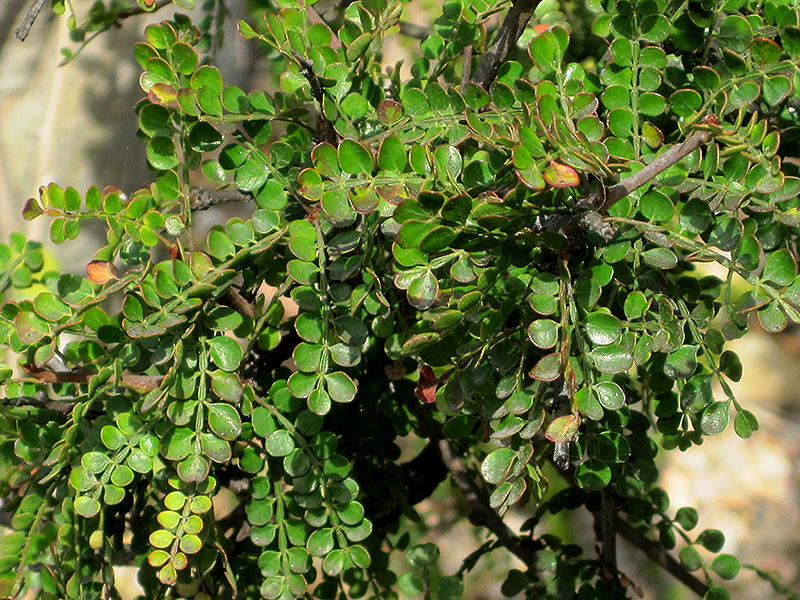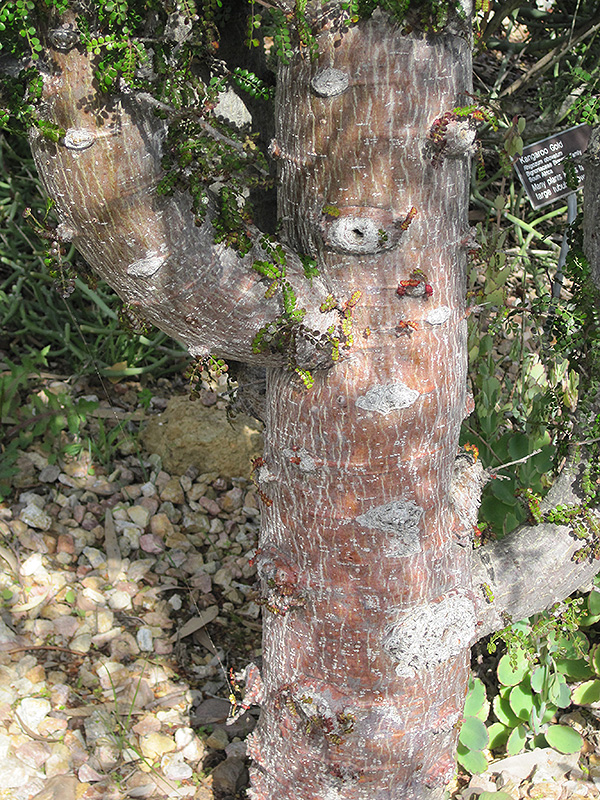$-$BeginNetPS$-$
$-$EndNetPS$-$
Height: 20 feet
Spread: 10 feet
Sunlight:
![]()
![]()
Hardiness Zone: 9a
Other Names: Jabily
Description:
An attractive small tree with fine green succulent foliage that takes on reddish hues in cooler weather; stunning trunk and branches with thick, twisted, mottled bark in gray and reddish-brown tones; great for containers and bonsai cultivation
Ornamental Features
Elephant Tree has attractive dark green evergreen foliage which emerges red in spring on a tree with an upright spreading habit of growth. The small succulent round pinnately compound leaves are highly ornamental and remain dark green throughout the winter. The mottled gray bark is extremely showy and adds significant winter interest.
Landscape Attributes
Elephant Tree is an evergreen plant with an upright spreading habit of growth. Its relatively fine texture sets it apart from other landscape plants with less refined foliage.
This plant will require occasional maintenance and upkeep, and can be pruned at anytime. It has no significant negative characteristics.
Elephant Tree is recommended for the following landscape applications;
- Accent
- General Garden Use
- Container Planting
Planting & Growing
Elephant Tree will grow to be about 20 feet tall at maturity, with a spread of 10 feet. It has a low canopy with a typical clearance of 3 feet from the ground, and is suitable for planting under power lines. It grows at a medium rate, and under ideal conditions can be expected to live for 60 years or more.
This plant does best in full sun to partial shade. It is very adaptable to both dry and moist growing conditions, but will not tolerate any standing water. It is considered to be drought-tolerant, and thus makes an ideal choice for xeriscaping or the moisture-conserving landscape. It is not particular as to soil type or pH. It is somewhat tolerant of urban pollution. This species is not originally from North America. It can be propagated by cuttings.
Elephant Tree is a fine choice for the yard, but it is also a good selection for planting in outdoor pots and containers. Its large size and upright habit of growth lend it for use as a solitary accent, or in a composition surrounded by smaller plants around the base and those that spill over the edges. It is even sizeable enough that it can be grown alone in a suitable container. Note that when grown in a container, it may not perform exactly as indicated on the tag - this is to be expected. Also note that when growing plants in outdoor containers and baskets, they may require more frequent waterings than they would in the yard or garden.
This plant is not reliably hardy in our region, please use with caution in areas where hardiness is a factor.


